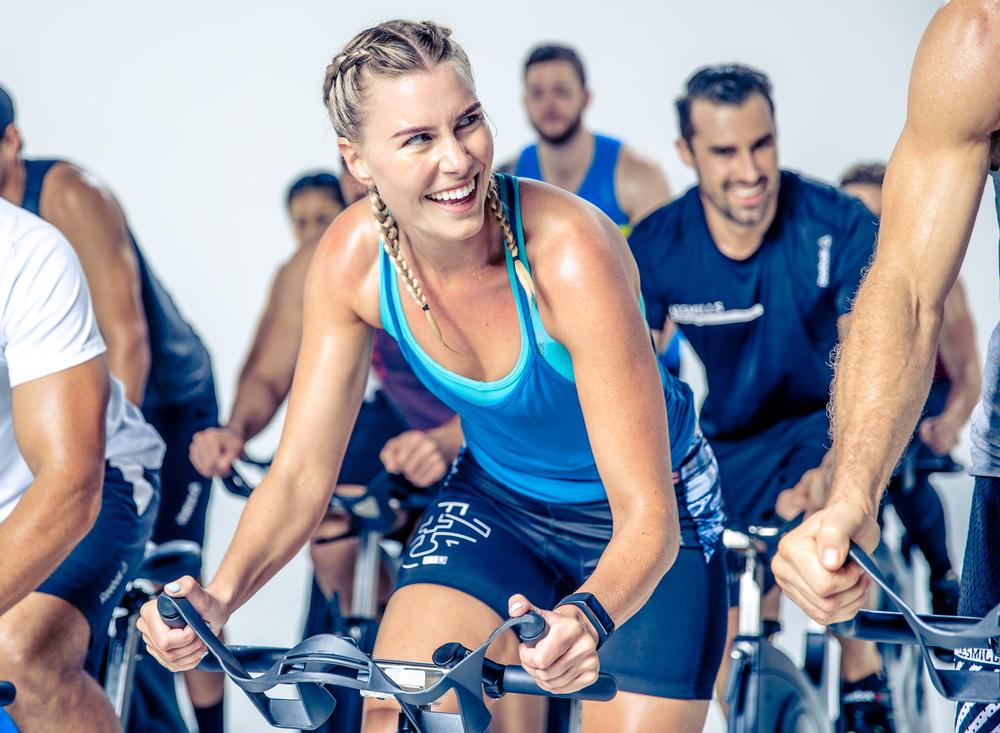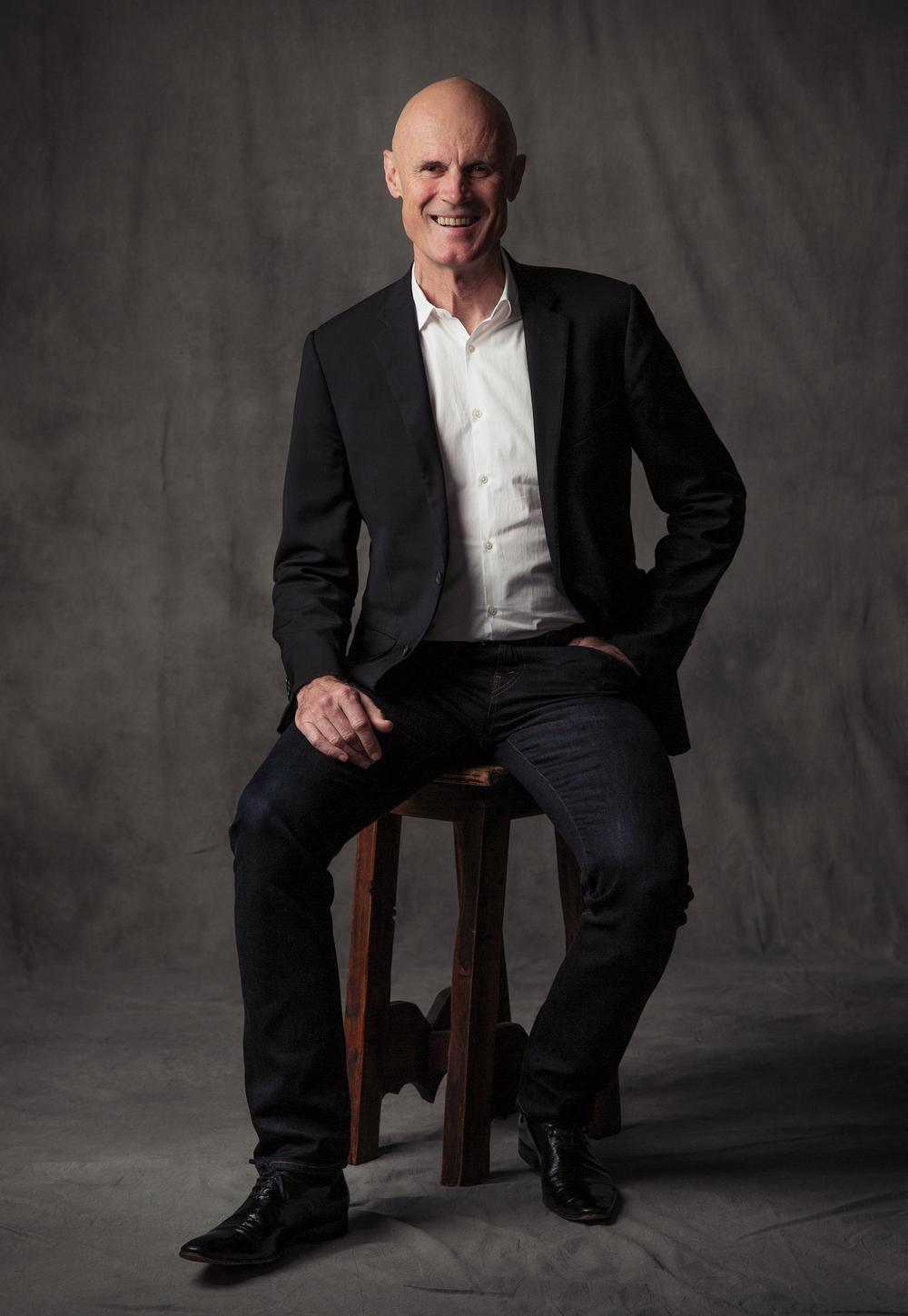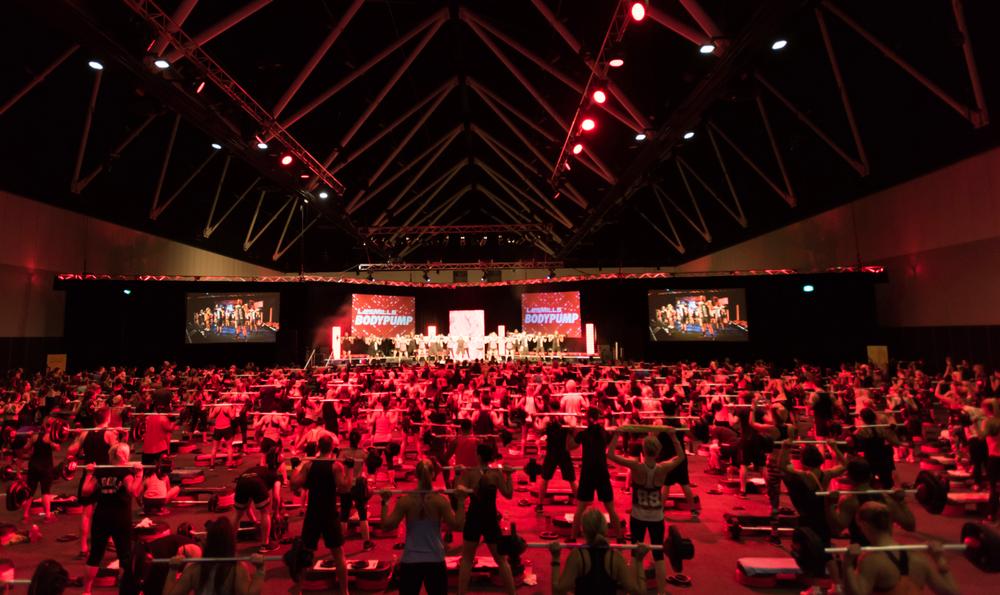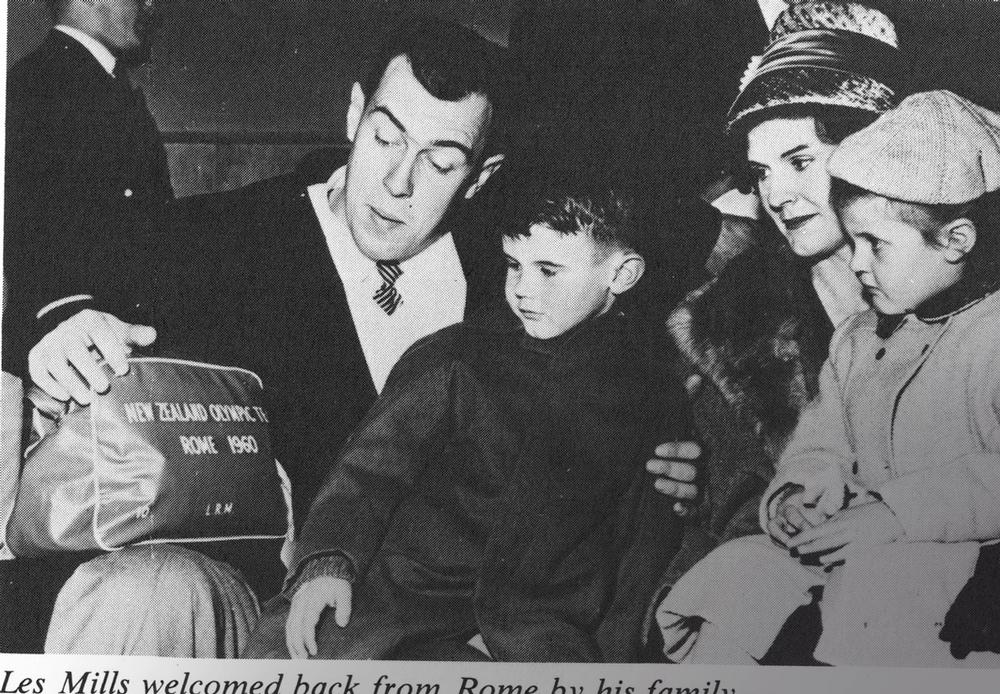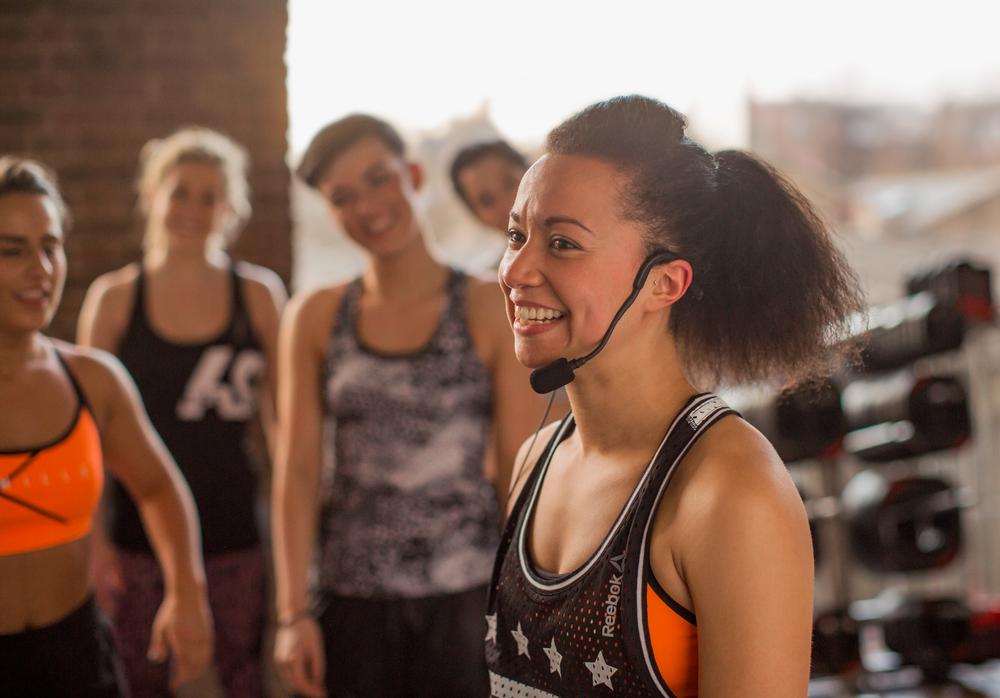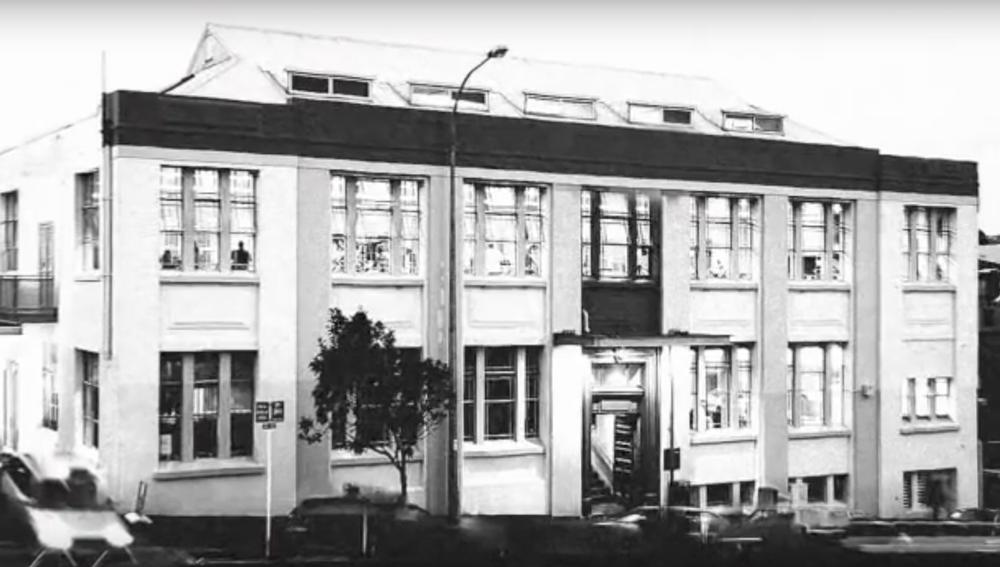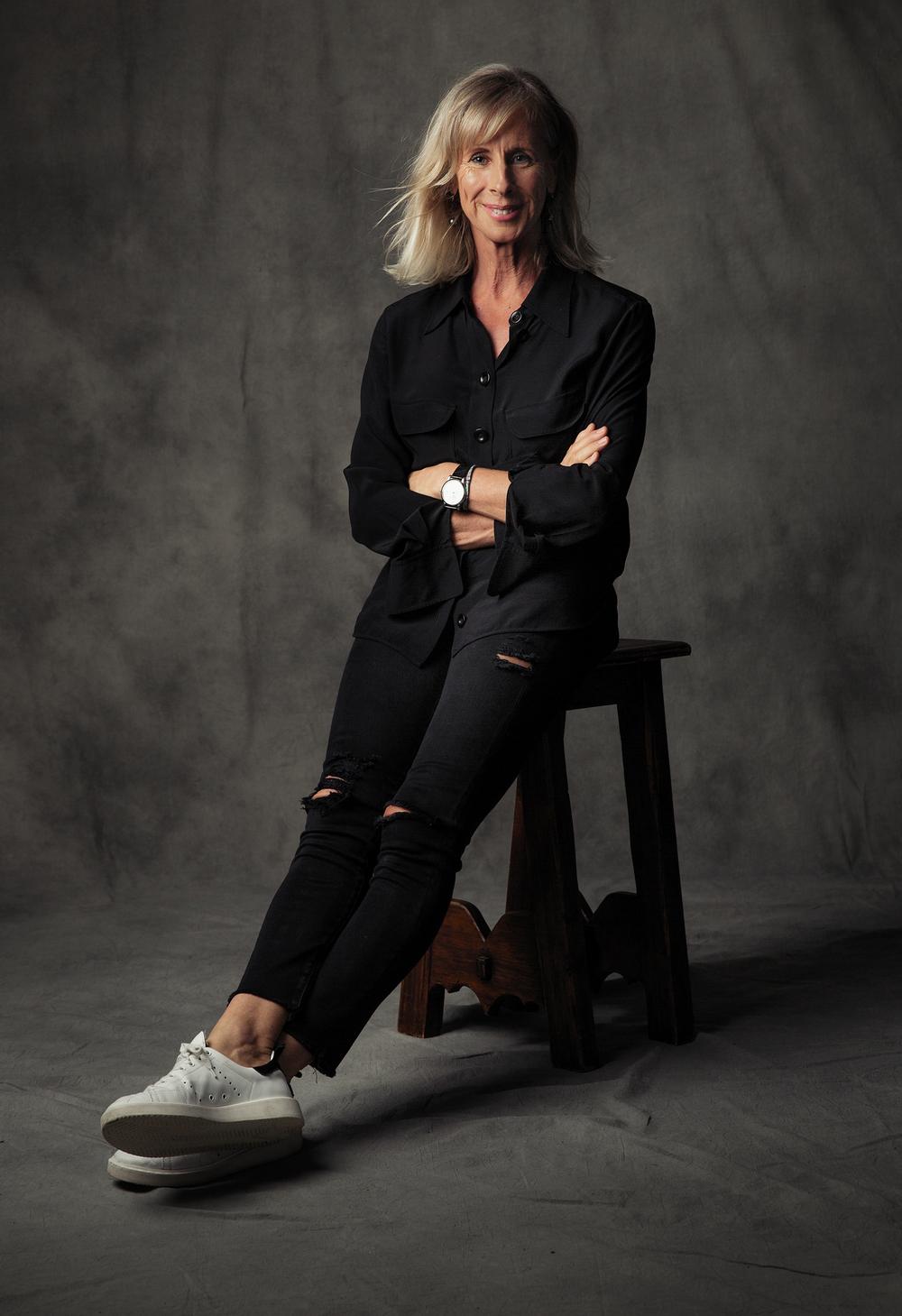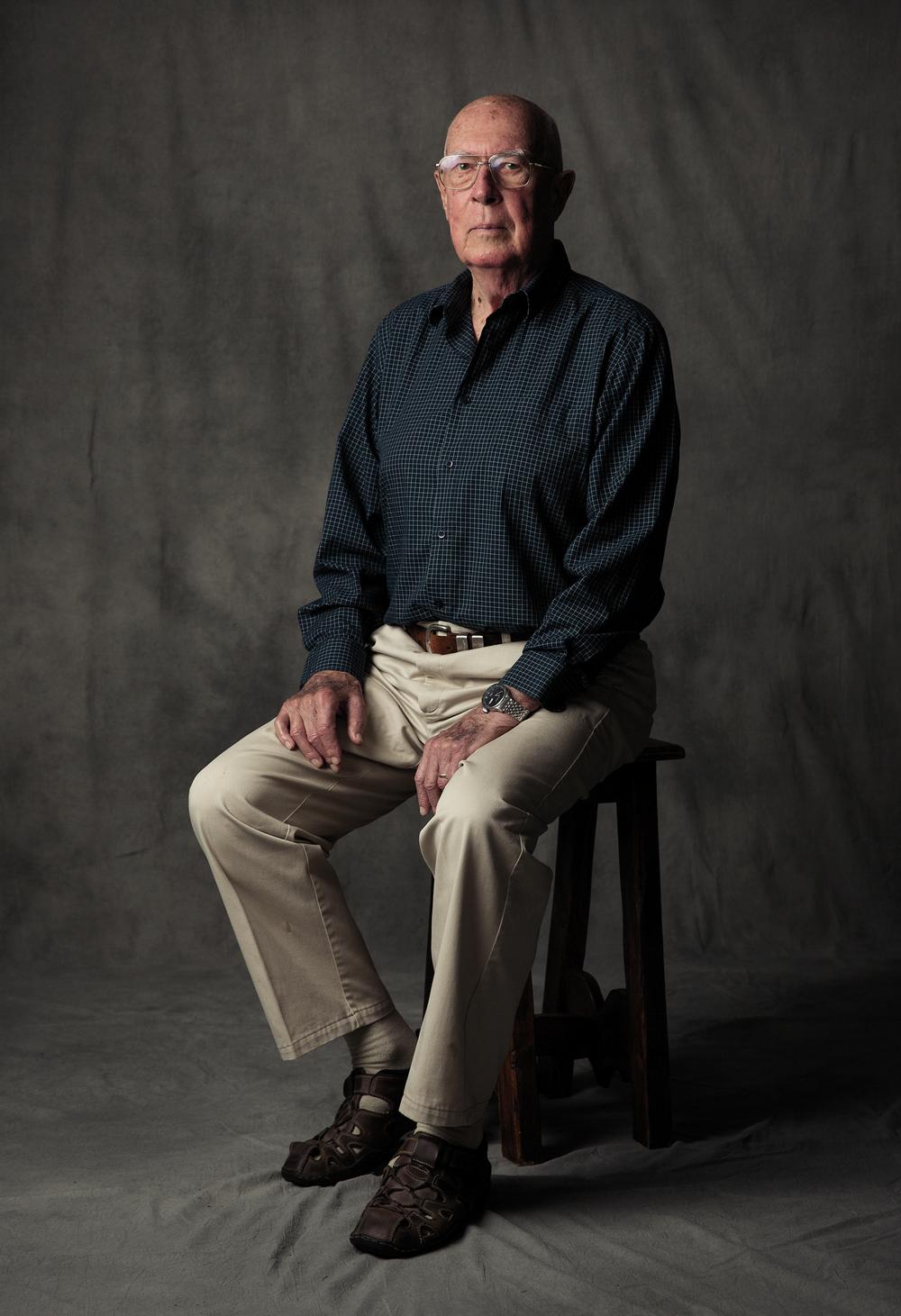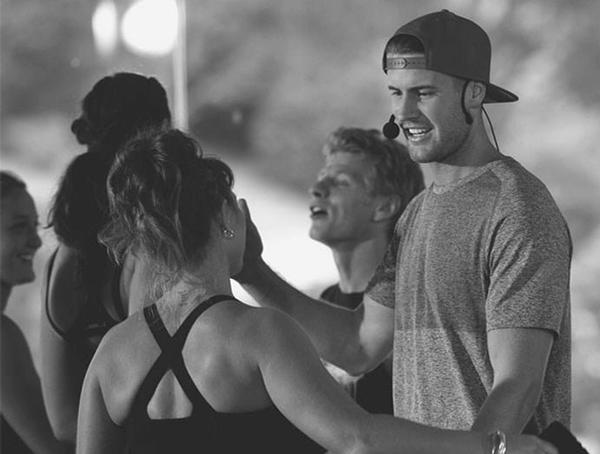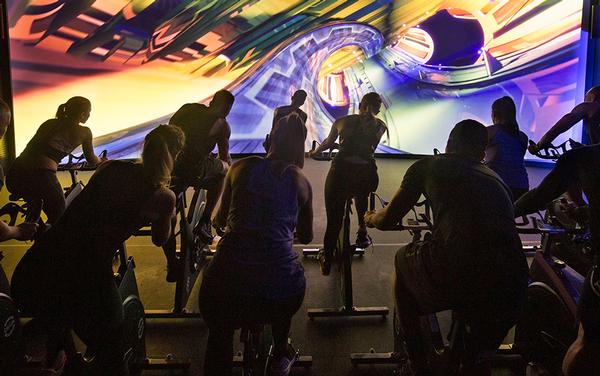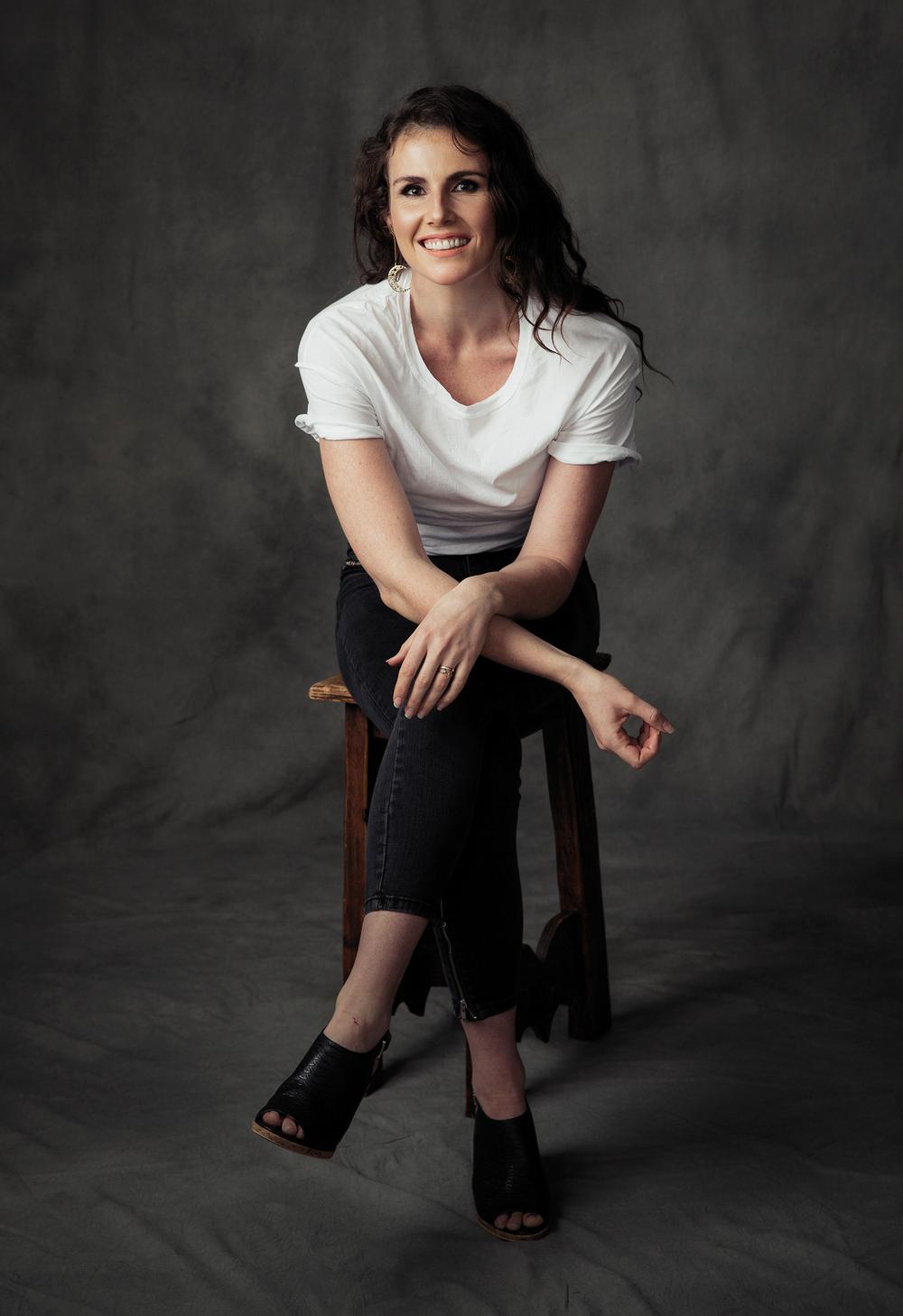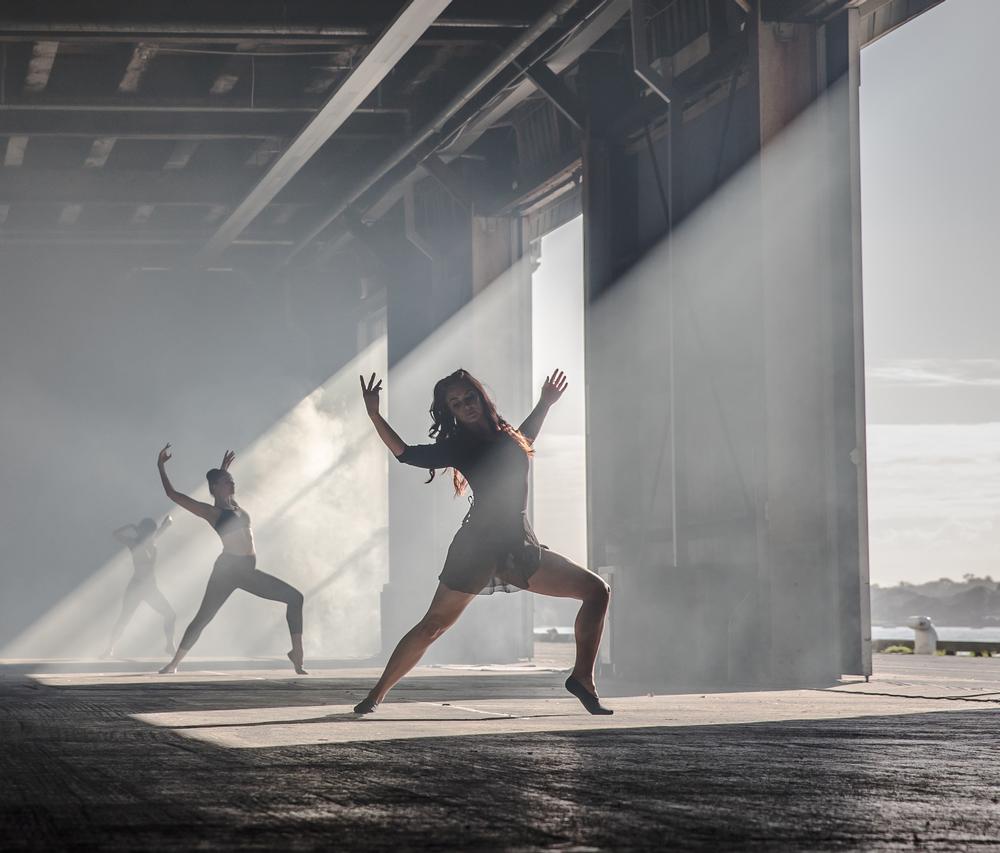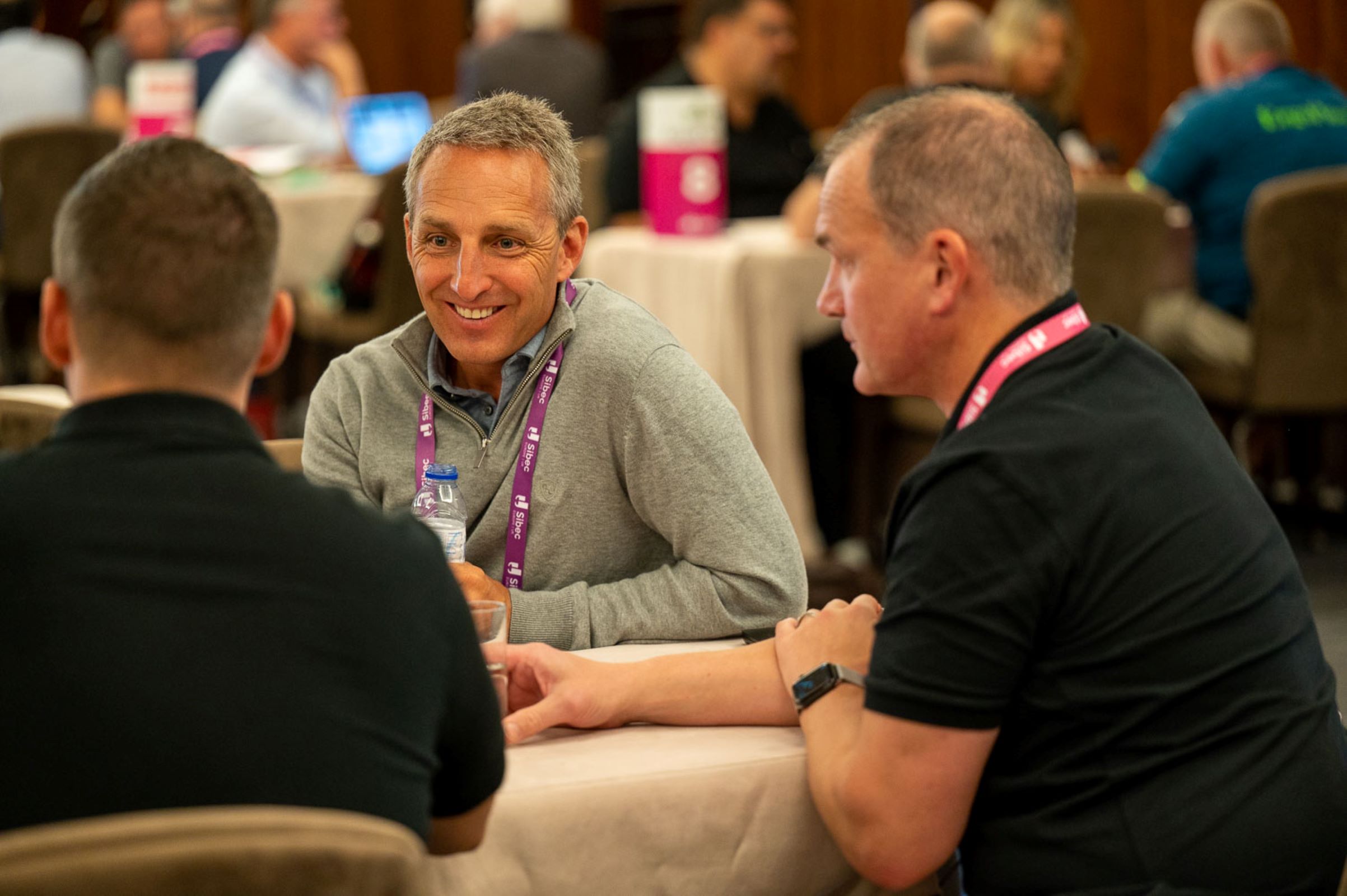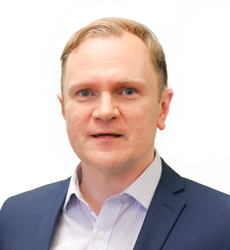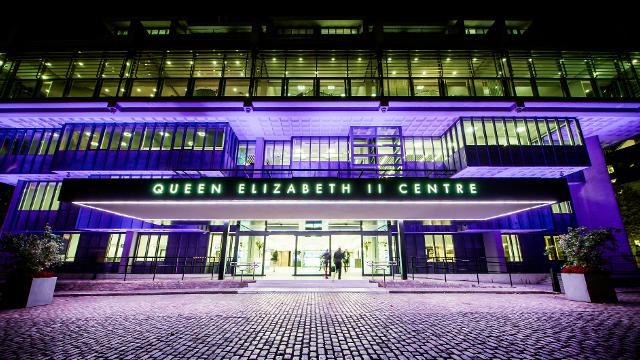features
Interview: Les Mills 50th
As the world’s largest group fitness business turns 50, three generations of the Mills family talk to HCM about striving for a fitter planet

Behind every successful business sits a defining belief that drives the company forward. For the Mills family, it’s a passion for improving the health of others, teamed with an unyielding competitiveness that stems from their rich sporting heritage.
“When my dad, Les Mills, opened our first gym in New Zealand 50 years ago,” says Phillip Mills, MD of Les Mills International, “he said the job of the fitness industry is to help people fall in love with fitness, and that’s a mission we’re still driven by today.”
2018 marks the company’s 50th anniversary – a rare feat in what’s still a young industry. Les Mills started out with that one tiny gym in Auckland, New Zealand and has evolved into a global fitness movement with a chain of gyms in New Zealand, a global licencing business for its fitness workouts and a research arm that validates and underpins the work of the business.
Today, the company’s 21 different programmes – including high profile brands such as Bodypump, Bodycombat, Grit, RPM and Bodyattac k – are licensed in 20,000 clubs worldwide, with a team of 140,000 specially trained instructors delivering group fitness classes to over six million people a week.
But it could have been a very different story. Over the past half century, Les Mills has battled banks, con-artists, hostile rivals, natural disasters and personal demons – all of which have shaped the family-owned and -operated company that exists today.
At the centre of the Les Mills story are three men and three women – split across three generations – whose lives have all been influenced by their elite sporting backgrounds. These are company founder and four-time Olympian Les Mills Snr, his wife Colleen, who represented New Zealand at the Commonwealth Games and died in 2005, aged 71; their son Phillip and his wife Dr Jackie Mills MD; along with their two children Diana Archer Mills and Les Mills Jnr.
Starting out
The origins of modern group fitness can be traced back to 23 Victoria Street West in Auckland. It was there that Les Snr and Colleen opened their first gym in 1968.
Overcoming a tough start in life – his father died when he was 11 – Les had become a celebrated New Zealand athlete and businessman who decided to branch out into fitness. He’d long had a passion for exercise and strength training, stemming back to his early teens.
“I was fascinated by strength particularly – always have been,” says Les, who at 83 still regularly rides an indoor bike while watching TV and lifts weights in his garage gym.
“As a boy I sent away for the Charles Atlas course I’d read about in a magazine. I wanted to kick sand in the bullies’ faces like Charles Atlas did and find a girl on the beach who would smoke cigarettes with me!” he reminisces.
“Then during the sixties, I was in the States on an athletics scholarship and there was a sunrise culture of gyms growing up, so I decided to take the concept back to New Zealand.
“We found a gym in Auckland which had just gone bankrupt – the American chap behind it was a fly-by-nighter who sold life memberships and ran off with the money – and we bought it from the liquidator for NZ$3,500,” Les recalls.
Opening on February 5th 1968, Les and Colleen were confronted with a queue of angry people wanting to work out and refusing to pay any more for the privilege.
He struck a deal to honour their memberships for a year if they’d commit to the gym beyond that and then set about adding new members to boost cashflow. The gym started out as a sport-based facility, mainly employing athletes the family knew through their sports training.
“We did a lot of circuit training,” says Les Snr. “We didn’t have aerobic classes in those days, but we ran circuits for the rugby trainers, the rowers and other athletes – they were time circuits, just like the circuits you see now.
“Colleen put a huge effort into getting the gym off the ground and everyone helped with everything. We had to work pretty hard at it and there was no goofing around – times were tough.”
After a less than auspicious start, the gym gradually began to take off. Further sites were added across New Zealand and Australia, forming the basis of the 12-strong Les Mills New Zealand health club chain that still exists today.
Strength training was, and still remains, a big part of those gyms, but it was the high-octane group exercise classes that really put the fledgling business on the map.
Early classes
Having moved to larger premises up Victoria Street West (where the club remains today), the family converted the original Auckland site into a group exercise studio.
“It was very much in the mould of the boutique clubs you see today,” says Phillip, who had just returned from an athletics scholarship at UCLA and was on the cusp of the company’s eureka moment. “I saw the birth of aerobics in the US and brought a friend from the UCLA track team over to New Zealand to help us get the whole thing started. She’d been teaching aerobics classes in the US.
“I’d just spent a year managing a rock band,” he continues, “So we brought in dancers and actors who were incredible performers to teach classes, plus a lot of elite athletes. This was possibly the first time fitness and entertainment had been brought together in this way.
“We took the old aerobic dance-type classes and transformed them into sports classes with dumbbells and machines for circuits. Jackie and I spent hours trying out different moves in our living room, to the point where we wore out the carpet!”
“The classes were so popular we were bursting through the walls of our studio. We built another studio, then another and a fourth on the roof. That’s when we thought, ‘we’re on to something’.”
Fitness meets feminism
What was notable about these classes right from the start of the 1980s was their appeal to women. Here was an offering that brought women into the gym, opening fitness to a whole new market.
For Jackie Mills, who as LMI chief creative officer oversees creation, production and training for all Les Mills workouts, it was the result of a wider societal movement.
“The 80s felt like a time of revolution for women,” says Jackie, who for years combined her role at Les Mills with a career as a doctor. “Women could create their lives with greater freedom and employment opportunities – it was a time of empowerment.
“It was group fitness that brought women to the gym, because they really liked the social aspect of working out in groups.”
As the classes took off, Les Mills began to license them to other clubs, first in New Zealand, then in 1981 in Australia.
Continued growth saw Les Mills go public in 1984, while a 1987 investment company buy-out enabled Les Snr and Colleen to divest and pursue new adventures. And then it all went badly wrong.
A month after the takeover, the 1987 crash wiped out the stock market and left the new owners in financial trouble. Having kept a small shareholding, Phillip was thrust into buy-back talks with liquidators in a bid to save the family firm from oblivion.
“I was in my early 30s with a young family, looking at needing to take out a loan of NZ$10m to save the business – that was a hell of a lot of money back then,” he recalls.
“It was a scary decision and a big gamble, but the family name was over the doors and I wasn’t about to let it shut.”
Through a loan from the liquidators and the sell-off of Les Mills clubs in Australia, Phillip took charge and the company was saved. But despite Phillip and Jackie’s bold vision for a turnaround and their gift for group exercise programmes, the tough times continued and with the business heavily in debt and banks unwilling to back a niche fitness concept, Les Mills spent six years struggling to pay wages and keep the lights on.
Phillip says: “By ’93 I was so burnt out I’d become pretty depressed. I’d put on weight, wasn’t exercising and it took Jackie to grab hold of me and say ‘Philly, you’ve got to get a grip.’”
“So I set myself goals – one was to make my way to A-Grade tennis. Of course, I never made it past the Whangarei Open, let alone Wimbledon, but within a year I lost 15 pounds, the depression lifted and the business started to turn a corner,” he says.
Having spent decades honing its standardised exercise programming and teacher training system, the easing of the debt mountain meant Les Mills could once again dare to dream globally.
An Australian partnership with national swim coach and Canberra gym owner Bill Robertson led to the development of the model that took the licensing business worldwide. In 1997 Phillip founded Les Mills International (LMI) as a separate company from the Les Mills NZ gyms, to focus on global licensing.
But once again, things were far from straightforward. Having underestimated the required levels of investment, LMI soon started to look like a bridge too far. “What we thought would cost NZ$10m a year ended up costing NZ$200m a year,” says Phillip. “We badly underestimated the scale of the challenge at the start and LMI lost money for its first eight years.
“Having to some extent nudged my dad out of the business, I then had to ask the old man to come back and help us steady the ship.”
Having recently concluded an eight-year term as Mayor of Auckland – one of many colourful career choices that have included coach, TV commentator and National Sports Director for Papua New Guinea – Les Snr returned to the business, bringing with him Jill Tattersall, who became CEO of LMI.
“I’d just lost re-election as Mayor and when Phillip called I thought ‘hang on fella, you don’t have to offer your dear old Dad a job just because he’s out of one,’” jokes Les Snr.
BACK to work
“We needed to free up Phillip’s creative genius, so he could develop the products and the programmes and all the magic,” remembers Les, “So Jill took over the nuts and bolts of the management and I scooted around doing contracts and trying to sign up the Germans and the French.”
Inch by inch, the Mills family worked together to haul LMI back on track, and by this point it had become clear that there was an insatiable appetite among club members around the world for the fresh new workouts from New Zealand.
Appealing to both sexes was no doubt an important breakthrough, but that’s also been true of other workouts since, so what’s the secret behind the huge popularity and longevity of the Les Mills programmes?
The Secret Sauce
Jackie Mills says: “I think for participants, the appeal is that the programmes deliver great results, create an incredible energy and they stay up to date with the latest moves and music.”
Staying ‘up-to-date’ requires each of the 21 Les Mills programmes to be updated every three or four months with new choreography, music and instructor training.
Programme directors scour the globe for trends and ideas to feed into this creative process. They also listen to hundreds of hours of music in search of the hottest tracks. Then it’s the job of the music licencing team to either gain permissions from record labels, or arrange for Les Mills Music (the biggest employer of New Zealand musicians) to create cover versions or original compositions.
“We’re very open about what it takes to put our programmes together, as it would be very tough to replicate,” says Jackie, adding that science is the real cornerstone of the results.
“Our head of research, Bryce Hastings (see HCM May 2018, page 16), works with academic institutions like Penn State University to ensure all classes are independently-tested. This data is used to produce peer-reviewed studies in academic journals,” she says.
“The research insights are harnessed by a team of experts to devise safe and effective choreography for Les Mills programmes, which are then screened through thousands of hours of in-club trials before being released to the wider market.”
One of the most important ingredients in the Les Mills formula is the people who deliver the classes. With an army of instructors worldwide, training and processes are pivotal to ensuring a smooth transition of programmes from Auckland to studios around the world.
According to Phillip, the instructor training side of Les Mills is actually loss-making. He says the commitment to maintaining high standards of instructor performance and providing them with affordable training options is what necessitates the license fee clubs pay.
As LMI creative director, programme director and presenter for some of the company’s biggest workouts, such as Bodypump, Bodycombat, Barre and RPM – Diana believes it’s vital the company is instructor-led in its approach.
“Instructors are the absolute heart and soul of Les Mills and our focus has to be their security and happiness,” she says.
“It’s really powerful to witness the passion and commitment they bring to their roles. These people are a true inspiration.”
But the company hasn’t always got it right with instructors. Diana admits lessons have been learned – from appearing too corporate and less of a people business – so the focus has shifted to really engaging and speaking to people on a human-to-human level.
“We’re honest, open and direct with instructors,” says Diana. “And we’re really listening to what they want, to make sure they feel part of this enormous family.
“I think that’s a challenge for everyone, as every business is going to become more digital and less human. It means we all need to focus on connecting back as people.”
Millennials and More
Aside from staying true to an army of thousands, staying ahead of the latest exercise trends has been another major challenge for the business.
Despite its reputation as a group fitness pioneer, the company was in need of a refresh by the end of the noughties and it took a few home-truths from Phillip and Jackie’s children to realise it was time for a shake-up.
Phillip explains: “It was Les Jnr who came to us and said: ‘Hey, some of your stuff is tired and doesn’t work for our generation. We’ve got to change it up a level.’”
“It was a big wake-up call for us. Les Jnr and Diana play a huge role in the business and they’ve really led the charge in making sure we appeal to Millennials and Gen Z – something the fitness industry as a whole has struggled with to date.”
Tasked with breathing new-life into the programme portfolio, Les Jnr – who is LMI creative director of Millennial programmes – set about what he calls ‘inclusive evolution’. This meant refreshing the Les Mills brand to appeal to younger people, while forging stronger ties with those already connected to the brand.
Paying particular attention to music, style, intensity and the length of sessions, the resultant new programmes, Grit and The Trip, were unlike anything the company had produced before.
Launched in 2012, Les Mills Grit ensured the company was well-placed for the fledgling HIIT boom, covering all bases with three distinct varieties: Grit Strength, Grit Cardio and Grit Plyo. But it was The Trip that really took the company into uncharted territory.
After teaming up with his friend Adam Lazarus, the pair created an entirely new category of workout, straight out of the digital entertainment world, dubbed ‘Immersive Fitness’. As Les Jnr explains: “We loved the projection mapping and the light shows you see during live music events and wondered if we could bring these elements into group fitness.
“After several years of R&D, we landed on the idea for The Trip – a fully immersive indoor cycling experience where we project virtual worlds onto the walls of the studio.
“This combination makes for an incredible sensory experience led by music, beat-driven visuals, mind-bending landscapes and a highly effective workout,” says Les Jnr.
Tactical error
As anyone who has tried The Trip will attest, it’s a powerful cinematic experience. However, some clubs were deterred from installing it by the high A/V set-up costs associated with the system, so has the programme lived up to expectations?
For Phillip, The Trip represents the future of fitness. But he says the company made tactical errors in bringing it to market which have since been rectified: “We let perfect get in the way of good by insisting clubs adopted expensive A/V set-ups with huge screens to ensure members benefitted from the full experience,” he explains. “That meant US$100,000 install costs which were out of reach for a great number of clubs.
“But we’ve listened and learned from that experience and the price of technology has also come down considerably, enabling us to create a range of more affordable options.
“Now The Trip is really starting to take off, because it’s the most powerful fitness experience a club can offer.”
A Virtual reality
In Phillip’s eyes, the industry’s biggest battle is continuing to appeal to young people at a time when the average age of a traditional club owner can often be up to 60 to 70, or older.
Here he sees innovation, both in the content clubs provide and the way it’s delivered, as being vital to bringing more Millennials and Gen Zers into the club setting. “We see virtual workouts as a massive opportunity for clubs to make better use of their studios during off-peak times and introduce more members to group fitness,” he explains. “As technology and members’ expectations evolve, clubs offering members exciting workouts, when and where they want, will stand out.”
As well as ramping up its studio offering with new Les Mills Virtual programmes, the company is also taking this content into the cardio area with indoor bikes – developed with Matrix Fitness and Stages Cycling – which were unveiled at IHRSA and FIBO. They feature on-bike screens, enabling users to join virtual classes.
But it’s Les Mills On Demand (LMOD), the at-home workout solution, which has raised eyebrows the most. The ‘Netflix-for-Fitness’ platform has been positioned as a means for clubs to reach beyond the four walls and engage members, even when they can’t make it to the gym. Profits from LMOD subscriptions, paid by members (US$12.99/month), are shared with the club.
Will this mean members no longer need to visit their club, and does it signal a shift away from the live classes that have made Les Mills famous? “Absolutely not,” says Phillip. “Live workouts will always be the pinnacle and nothing can replace that, but whether it’s a Body Coach video on Youtube or the old Jane Fonda tapes, people have always worked out at home as well as at their club. LMOD means clubs can support members in maintaining the exercise habit, so they’re less likely to quit and it means they can benefit financially as well.
“And it works both ways – this is all about using technology to grow the market, reach new audiences who consume content in different ways, and ultimately drive people towards the unbeatable thrill of a live class in their local club. Already, we’re seeing a third of LMOD users migrating to their local clubs.”
2020 vision
Growing the entire fitness category will be key to Les Mills making good its bold goals. Putting numbers to the vision, Phillip says by 2020 the company aims to be providing 20 million live workouts a week and to have reached a valuation of NZ$1bn.
“The money’s not important to us, but it gives us the means to develop the organisation to do the things we want it to,” says Phillip, acknowledging the many struggles, challenges and mishaps that have accompanied the family’s significant successes.
Citing a ‘catalogue of Les Mills failures’ – a global PT licensing business, several clothing firms and three separate nutrition companies have gone by the wayside during the family’s 50 years’ in business – Phillip says it’s vital to have that level of cashflow available if the company is to continue to push the boundaries.
“We’ve made more mistakes than I care to count over the years, but you take your chances, you learn from them and you go again,” he says. “Ultimately, a rising tide lifts all boats and we’re focused on working closely with our club partners, harnessing technology to grow the market and ensure everyone benefits from a fitter planet.”
A social mission
Corporate social responsibility and activism have always been a strong part of the Les Mills identity. The company has donated millions to green charities and environmental and political causes, while last year it partnered with Unicef to raise over a US$1m to improve water, sanitation and basic hygiene in East Africa through the ‘Workout For Water’ campaign.
The company sees a strong link between the physical and environmental health of the planet, and this formed the basis for the 2006 book Fighting Globesity, which was co-authored by Phillip and Jackie. The book highlights the complex links between exercise, diet and the environment, making a cogent argument for policy and social initiatives that could hugely reduce the preventable health conditions blighting global health systems.
“A fitter planet means not only the fitness and health of its citizens, but also the planet itself,” Jackie explains.
“As a company we’re true greenies and believe every individual who becomes healthier can create a ripple effect in their community. Our industry has such an important role to play in driving this.”
Brand legacy
As for who’ll drive the company forward over the next 50 years, it seems certain the Mills family will remain at its core. Phillip and Jackie have no plans to retire any time soon, while Diana and Les Jnr are thriving in their senior roles. But there’s also a bigger picture, says Phillip. “Les Mills is more than just a company that is managed by a few individuals,” he adds. “There’s a global management team of 2,000 people in place, which contains many talented successors.
“Beyond that, there’s a collective energy that is dispersed among the clubs, the instructors and the participants.
“It’s become a movement that is bigger than all of us,” he concludes. “We’re proud to have supported millions of healthy lives through our fitness industry journey."
Les Mills Virtual & On Demand workouts
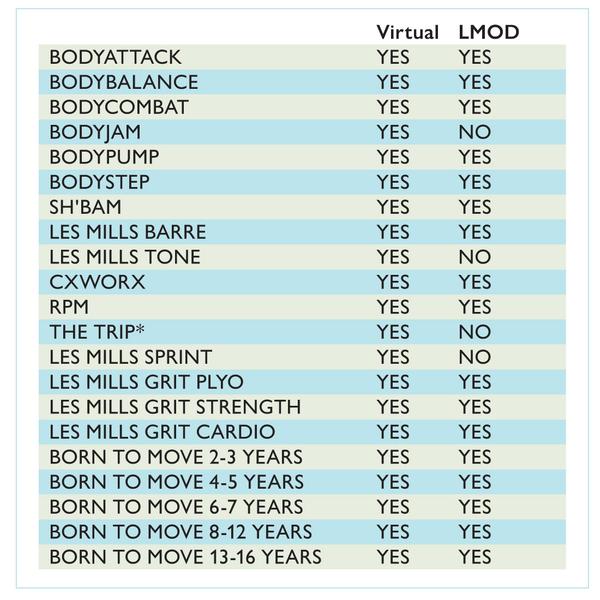
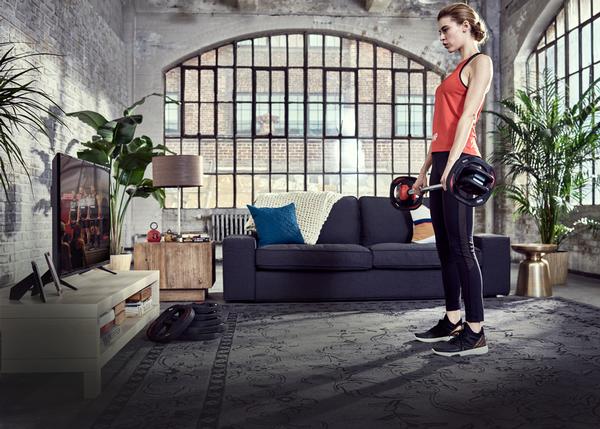
Club owners talk about Les Mills international at 50
David Patchell-Evans,founder & CEO,
GoodLife Fitness Clubs
“We now have almost 400 clubs and Les Mills classes have been a key part of our growth. They brought people to us, made them trust us and gave them enjoyment. We have seven different Les Mills classes in an average club. People really like the variety, the quality, the music and the instruction. As for my instructors, you know they’ve got Les Mills tattooed on their derrieres, right? They really love the system!”
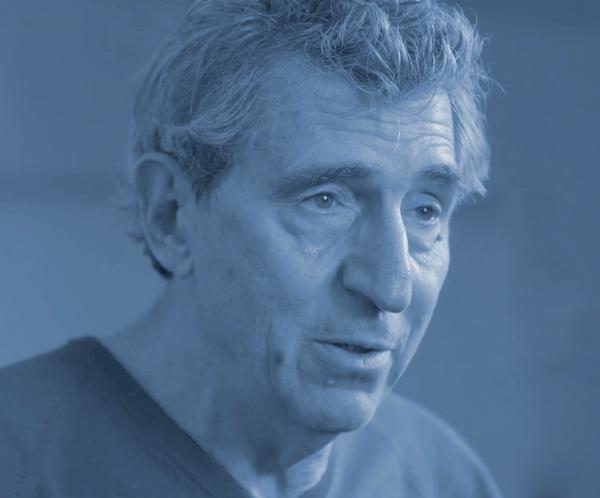
Geoff Dyer,
President Crunch Fitness ,
West Florida/Orlando/Atlanta
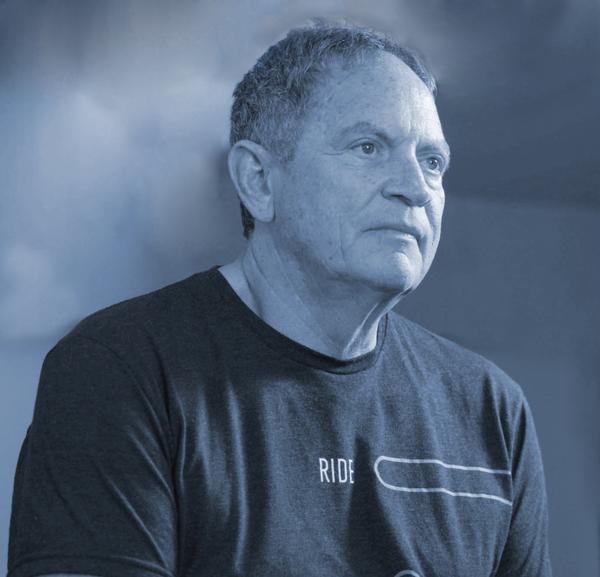
“People who teach Les Mills are passionate about the brand and what it stands for – there’s such a high level of expectation.
That’s where the value is – the integrity of the brand. Once members or staff have a chance to get involved, they’ll never leave it. There isn’t another brand that comes close.”
Steve Schwartz,
President & CEO,
Midtown Athletics

“I’ve always been so impressed with what they do and by how much thought and attention goes into delivering really good programming – we club owners are totally appreciative of that.
Les Mills is also really driving the acceptance of virtual around the world.”
Frank Napolitano,
President,
null,24-hour Fitness
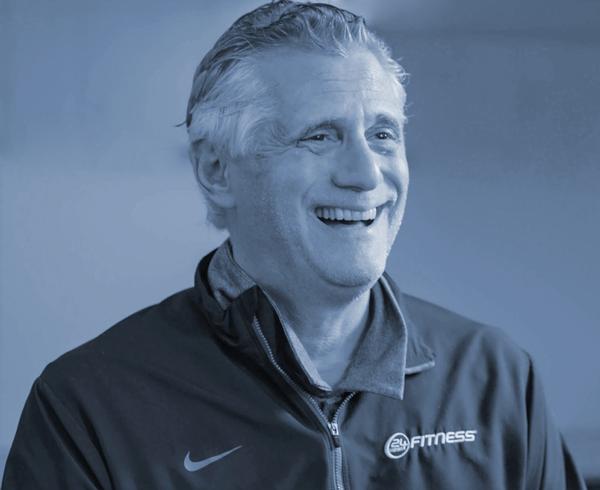
“Their passion for doing programmes brilliantly every time and for spending what it takes to do it right, has allowed a smallish company from a smallish island nation to own the programmed group exercise market around the world.”
Lynne Brick,
President and founder,
Brick Bodies
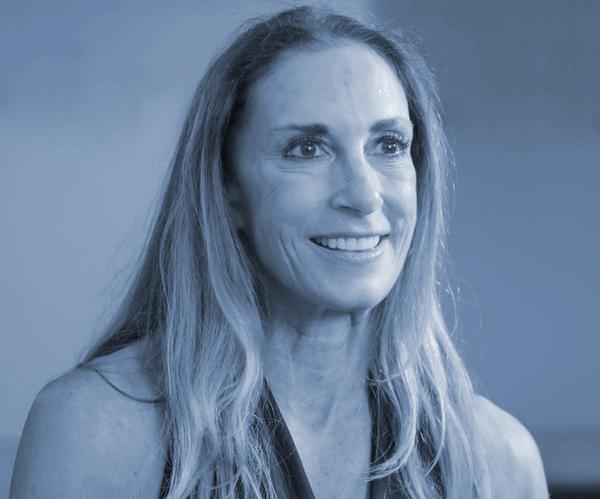
“What’s so incredible is they’re constantly reinventing themselves, and that’s the key to success to any great company – staying true to the core business while being committed to change.”


